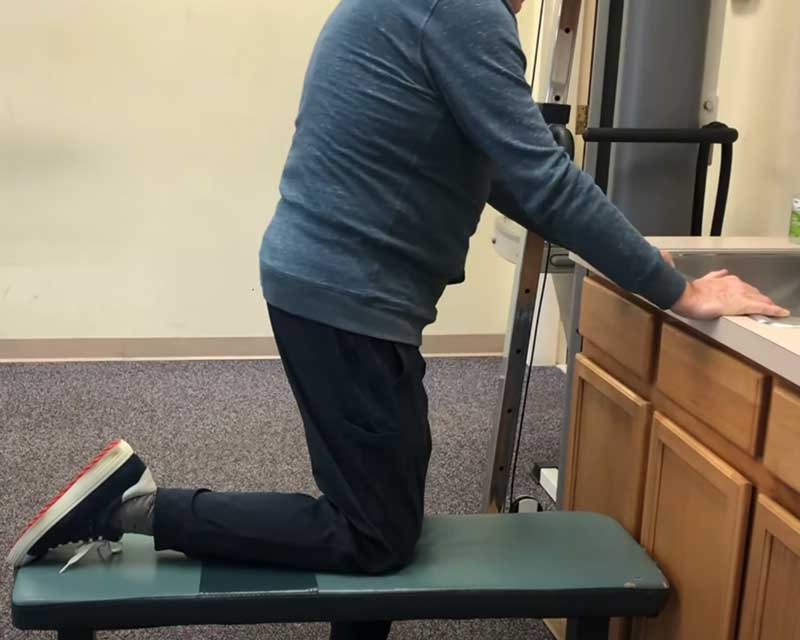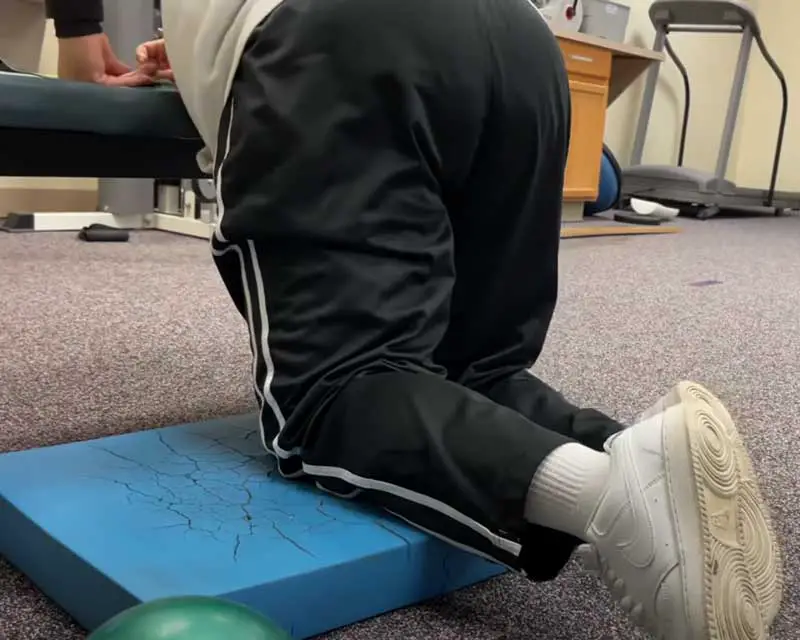When Is Kneeling Safe After A Total Knee Replacement
Unless your surgeon specifically advised against kneeling you are generally safe to start kneeling after 6-weeks or once your surgical incision is healed.

Kneeling After A Total Knee Replacement
Depending on the implant and bone quality, kneeling after a knee replacement is something to ask your surgeon about.
Often, patients assume they are not allowed to kneel or fearful of kneeling.
Some surgical approaches cut around the patella and front of the knee which make kneeling more comfortable, but in general, most patients are allowed to kneel after a total knee replacement surgery once the incision is healed which usually is complete by 6-weeks.
Why Would Someone NOT Be Allowed To Kneel
A couple reasons you may have been told not to kneel include: poor bone quality, the potential for bone fracture, complications related to the patella “kneecap” or complications with the healing of the incision.
Sensitivity With Kneeling
It is common for the post surgical incision to be highly sensitive to pressure. Some patients report feeling sensitivity with the pressure of bed sheets rubbing against the incision. In these cases I would recommend you seek the services of a physical therapist who can evaluate your knee and provide desensitization techniques to help eliminate this problem.
In my clinic we use cupping, kinesiology taping, and other simple strategies to help desensitive the incision.
Mirror therapy is also another great option used in many physical therapy clinics.
Kneeling on a Bench
In the image below you can see one of my clients kneeling on a padded bench. If you notice, his knee requires greater than 90-degrees of flexion in this photo.
When he started this stretch his hips were closer to the countertop which allowed him to slowly increase knee flexion range of motion under his own control.

Why Is It Helpful To Kneel
Knee flexion is an important part of human movement and function. Sitting on a commode, or more importantly getting up from a commode, walking down stairs, and getting up from the ground may be vital to survival and require varying levels of knee flexion greater than 90-degrees.
Kneeling is a great way to continue improving knee flexion beyond your time at physical therapy.
Kneeling on a Pad
In the following photo, you can see my patient is kneeling on a 3 inch pad. This pad allows her to apply pressure to the knee replacement while being in full control of how much pressure she applies.
Her forearms are positioned on a workout bench, but when she performs this exercise at home she does it in front of a couch.

Different Strategies for Kneeling
Half Kneel
Half kneeling may also be referred to as a lunge position. In this case you would have one knee down on the ground and the other knee up with your foot on the ground. This is an important transition when getting up from the ground.
Half kneeling allows you to keep your surgical knee off the ground, but requires a good amount of knee flexion, ankle flexion, and hip flexion.
Tall Kneel
Tall kneeling involves having both knees on the ground and full hip extension. In some cases, transitioning from sitting on the ground to tall kneeling as a way to get to standing is easier than half kneeling for someone who does not have the strength or range of motion in one or either leg.
Quadriped
This is the classic hands and knees position. It is important that you train this position with a skilled therapist because if you were to accidently fall and could not get yourself to standing, the ability to crawl to safety could mean the difference between safety and further injury.

Anthony Maritato, PT
Physical Therapist
Anthony Maritato, PT has been a licensed physical therapist and private practice owner since 2006. Ohio license #PT011602.
Anthony has been passionate about helping patients recover from total knee replacement surgery as well as rotator cuff repair surgery.